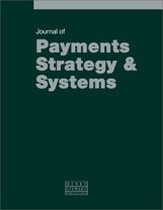Recognising and thwarting transaction and payment laundering
Abstract
The internet has facilitated economic growth, new mass retail models and financial inclusion for the under-banked and micro-businesses. At the same time, however, it also enables new avenues of crime. The ease with which goods can be sourced and distributed online has enabled cyber criminals to thrive. Their endeavours are severely compromised, however, when credit card networks and acquirers deny access to payment systems. Criminals have adapted by utilising transaction laundering — the use of online ‘front’ businesses, and payment laundering — the use of alternative payment methods (APMs) with less mature risk policies. While credit card systems have strict rules and processes, APMs like peer-to-peer, e-wallet and money transfer have less robust due diligence and monitoring practices. Perpetrators dubbed ‘payment hustlers’ rotate between different front businesses and different payment methods through trial-and-error until they gain safe passage into the payment system. Banks and payment service providers can secure their operations through both organisational and technological best practices. Furthermore, rigorous due diligence can coexist with a smooth business customer onboarding experience.
The full article is available to subscribers to the journal.
Author's Biography
Dan Frechtling is Chief Product and Marketing Officer for G2 Web Services. His previous roles include General Manager of Website Products for a global digital firm spun out of British Telecom. He has worked in technology, marketing and product development for 20 years. He earned his MBA with distinction from Harvard Business School and his BS with high honours from Northwestern University.
